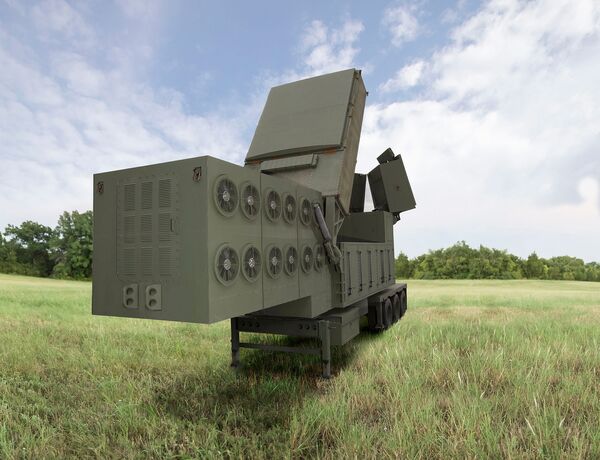
Raytheon is replacing the US Army's Patriot radar with the Lower Tier Air and Missile Defense Sensor. Some of the prototypes are undergoing testing with the army. (Raytheon)
The US Army is testing two of its new air-defence sensors at White Sands Missile Range (WSMR) in New Mexico, the service recently announced.
The Lower Tier Air and Missile Defense Sensor (LTAMDS) has begun contractor verification testing (CVT), the army's Program Executive Office Missiles and Space (PEO MS) announced on 18 May. The army envisions the radar as a key technology for air defence in Guam and as a replacement for the Phased Array Tracking Radar to Intercept on Target (Patriot), service officials said.
Raytheon Missiles and Defense won a USD383 million contract in 2019 to build six prototypes for the service. Joe DeAntona, Raytheon Missiles and Defense's vice-president of business development, told Janes in March 2023 that the service had begun some testing of the sensors.
The system's primary sector CVTs are focused on regression, identification of friend-or-foe, and engagement operations centre testing “in preparation for live air-breathing threat search/track missions”, according to PEO MS's announcement. Raytheon officials said in 2020 that LTAMDS could track weapons that travel at hypersonic speeds – some of which are air-breathing missiles – but did not provide further details at that time.
There are two sensors at WSMR undergoing testing, Scott Stearns, spokesperson for the range, told Janes on 24 May. Developmental test activities will begin at the range “later this year”, according to PEO MS.
Looking to read the full article?
Gain unlimited access to Janes news and more...
